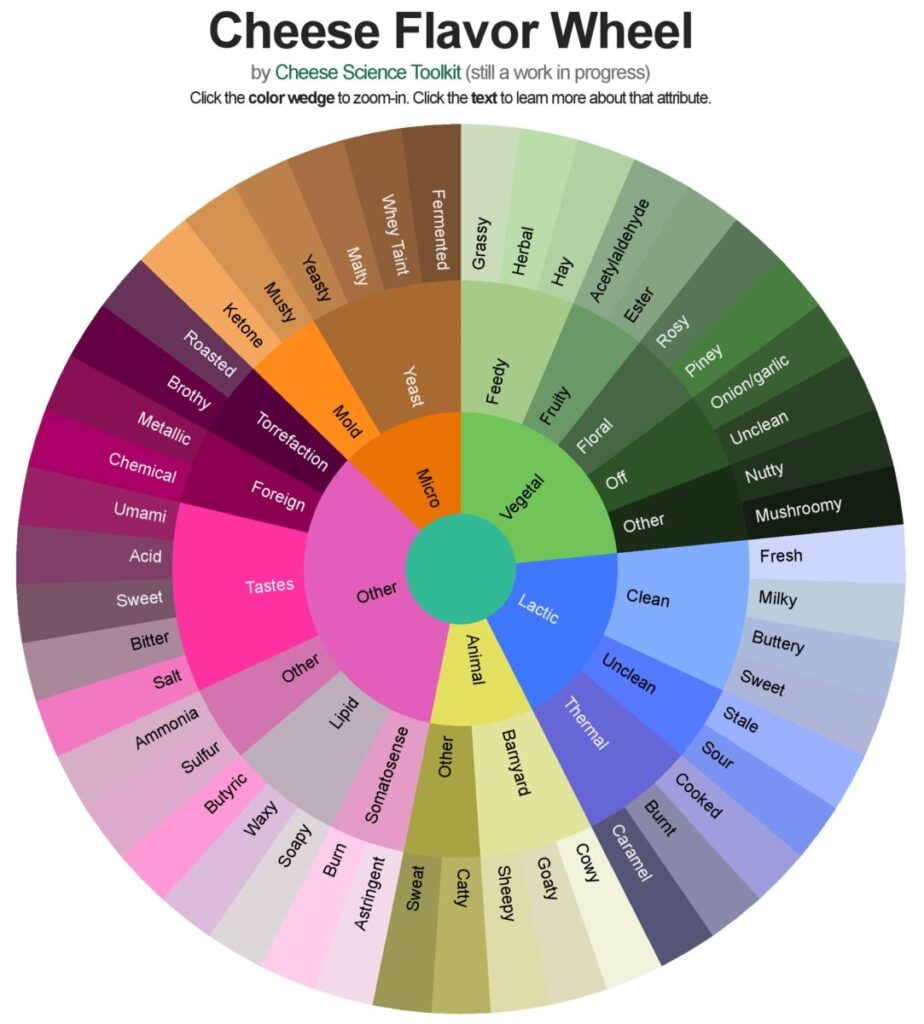Rule 3: Cheese your own adventure.
Rule 4: Learn the basic styles of cheese.
While at the farm, Melanie, her friend Candace and I did a cheese tasting on a Friday night. After a hard week of work, what could be better or more rewarding that tasting some cheeses like the ones we were working so hard to make! The day before the tasting, Melanie went to Burlington on a cheese delivery and while at a gourmet shop called Dedalus, she picked up some cheeses for us to try against her Swallow Tail Tomme.
That morning, Melanie and I discussed our combined lack of knowledge in cheese tasting. While both of us love cheese and enjoy it regularly (or maybe more than regularly, ha!), neither of us had ever sat down and thought too much about the different notes we were tasting. I don’t drink so I can’t relate to people saying they taste cherry, chocolate or tobacco in their red wine. Similarly, neither of us felt particularly prepared to identify the different notes in the cheese we were about to taste. So we both went to the Internet in search of some resources to help guide us. Melanie found a Cheese Flavor Wheel which was very helpful and she printed it out for us before the tasting.

Before tasting the cheese, we came up with the idea that before we shared out what we were sensing, we would: first write down what we were tasting ourselves without referring to the flavor wheel; then refer to the flavor wheel for additional adjectives and write those down; and finally, share out with the others what notes we were sensing in the cheeses.
The cheese tasting line-up included four natural rind cheeses:
- Stony Pond Farm Swallow Tail Tomme (Melanie’s cheese) – cow’s milk cheese
- Tommette Vendeenne – mixed milk cheese (sheep and cow) from the Pyrenees in France
- Tomme Crayeuse – cow’s milk cheese from the French Alps (Savoie)
- Cantalet – cow’s milk cheese from the Auvergne region of France
- Gorwydd Caerphilly – cow’s milk cheese from Wales
We started with the Tommette Vendeenne. It was very creamy and smooth. It was mild and milky. You could definitely taste the earthiness of the sheep’s milk. We all liked this and were glad we had started with this cheese because as we learned, in cheese tastings you should start with the most mild cheeses and go progressively stronger.
Next came the Tomme Crayeuse. Right away, I knew this was not a cheese for me. It had a very strong ammonia taste. I also tasted acidic, citrusy notes. It was very creamy and also had a funky rind. None of us particularly liked this cheese.
Next was the Cantalet. This cheese was yum. It was harder than a tomme. It was buttery, waxy and nutty, with a real umami flavor. We all liked this.
Next was the Caerphilly. This cheese had way too much ammonia for me, a taste I am coming to see that I do not like at all. It really hit the front of the tongue. It had acidic and sour notes, and was buttery and tangy. As it warmed up, it was more pleasant and it was interesting to see how temperature changed the flavor.
The final cheese we tasted was Melanie’s Tomme. I know I am biased but it was the best one of the bunch! It was sharp, buttery and nutty. You could taste notes of hay. I liked the fact that it was a bit grainy too.
I really liked the experience of tasting different cheeses and taking the time to see what notes jumped out. I was especially proud of myself for being able to taste the citrus notes in the Tomme Crayeuse. I think this will be something I will do more regularly to continue developing my palette and food tasting vocabulary.


